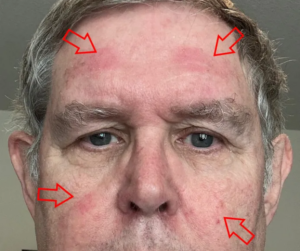Kar Guttag is not a cynic. He is a brilliant engineer with extensive knowledge and experience of Alt Reality devices and a particularly astute understanding of near eye displays. He doesn’t question the devices or their markets but does explore their efficacy.
He recently culminated a series of articles with one entitled, Apple Vision Pro – Influencing the Influencers & Information Density.’ It provides his usual insightful analysis of the Apple Vision Pro (AVP) mixed reality headset, focusing on its impact on tech influencers. Karl is actually the influencers’ influencer. He stokes conversations and tangents among a group of very earnest headset wearers.

More importantly, the article delves into the human factors and user interface issues highlighted by influencers like Linus Tech Tips (LTT), such as the discomfort caused by the AVP’s headband, the need for game controllers, and the limitations of video mirroring via WiFi.
As for the information density problem faced by the AVP and other VR headsets when emulating 2D physical monitors in a 3D space. Karl explains that the effective resolution of the AVP is significantly lower than the monitors it attempts to simulate, due to factors such as the display’s peak resolution, resampling, and the limited usable field of view. He emphasizes that the AVP requires more than double the pixels per degree (PPD) and better optics to match the information density of modern computer monitors.
Karl appreciates LTT’s comparison of a real workspace with multiple 4K displays to the AVP’s simulated workspace, highlighting the limitations of the headset in terms of text clarity and the need for massive virtual monitors. He also addresses the potential for eye strain and headaches when using the AVP for extended periods.
While acknowledging that some issues, such as the lack of multiple screen support and the inability to save virtual screen layouts, could be resolved through software updates, Karl stresses that the fundamental problem of low information density is not easily solvable.
I am going to coin a phrase here because I use it myself sometimes tnat is being Guttaged. For MR headsets, near eye displays, and Alt Reality devices it is the equivalent of a failing grade. Karl is too polite and too scientific to dismiss any product or company out of hand. He merely provides a lesson in what is not making the grade in the device. It is almost invariably always the display technology. He has thoroughly Guttaged the AVP, and to be honest, he has Guttaged pretty much every device he has ever reviewed, highlighting how there is no device that meets an acceptable standard of display quality for the job at hand.
I don’t have anywhere near Karl’s skill or technical insights. I always viewed devices with near eye displays with the notion that I have never heard of any user problem that screamed to have a display place about an inch from the eyeball. Who thinks that’s ever a good idea? Karl’s approach is, the display is there and it is supposed to do what it says so, does it? Mine is, why the hell did you put a display there? Being Guttaged is probably the permanent state for Alt Reality devices. He has stated the limits of the physics and the attempted solutions in tech. Apple’s Vision Pro actually performs less than its counterparts because of the expectations and the price and the hype.
In the annals of corporate history, the Vision Pro will be the modern tech equivalent of Ford’s Edsel. Corporate history is about as interesting as studying Tolstoy’s interest in agrarian reform but it seems like a nice way to turn a phrase and end an article about the need not to sucker any more consumers into buying a Vision Pro, one that will fall on deaf ears in Cupertino.

